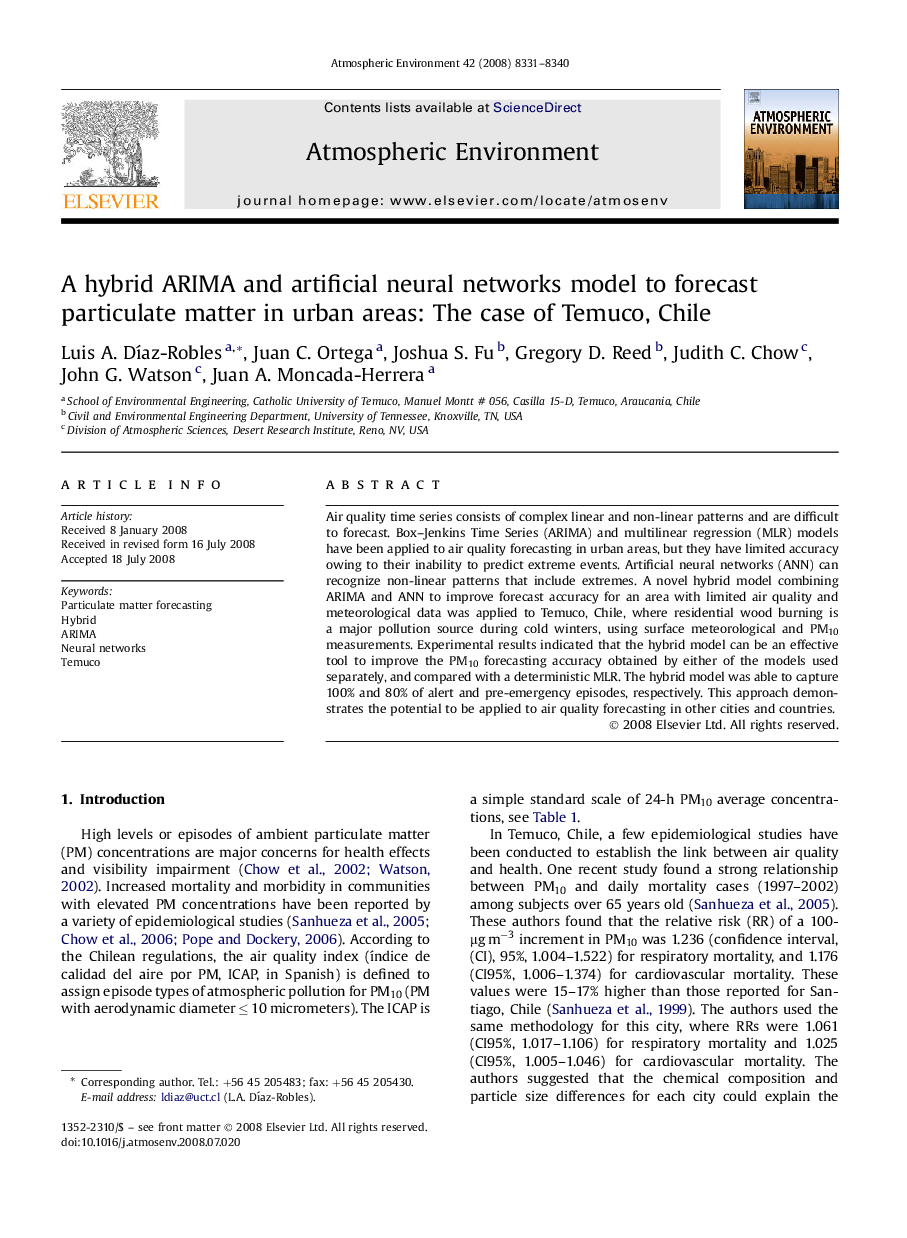| Article ID | Journal | Published Year | Pages | File Type |
|---|---|---|---|---|
| 4442049 | Atmospheric Environment | 2008 | 10 Pages |
Air quality time series consists of complex linear and non-linear patterns and are difficult to forecast. Box–Jenkins Time Series (ARIMA) and multilinear regression (MLR) models have been applied to air quality forecasting in urban areas, but they have limited accuracy owing to their inability to predict extreme events. Artificial neural networks (ANN) can recognize non-linear patterns that include extremes. A novel hybrid model combining ARIMA and ANN to improve forecast accuracy for an area with limited air quality and meteorological data was applied to Temuco, Chile, where residential wood burning is a major pollution source during cold winters, using surface meteorological and PM10 measurements. Experimental results indicated that the hybrid model can be an effective tool to improve the PM10 forecasting accuracy obtained by either of the models used separately, and compared with a deterministic MLR. The hybrid model was able to capture 100% and 80% of alert and pre-emergency episodes, respectively. This approach demonstrates the potential to be applied to air quality forecasting in other cities and countries.
